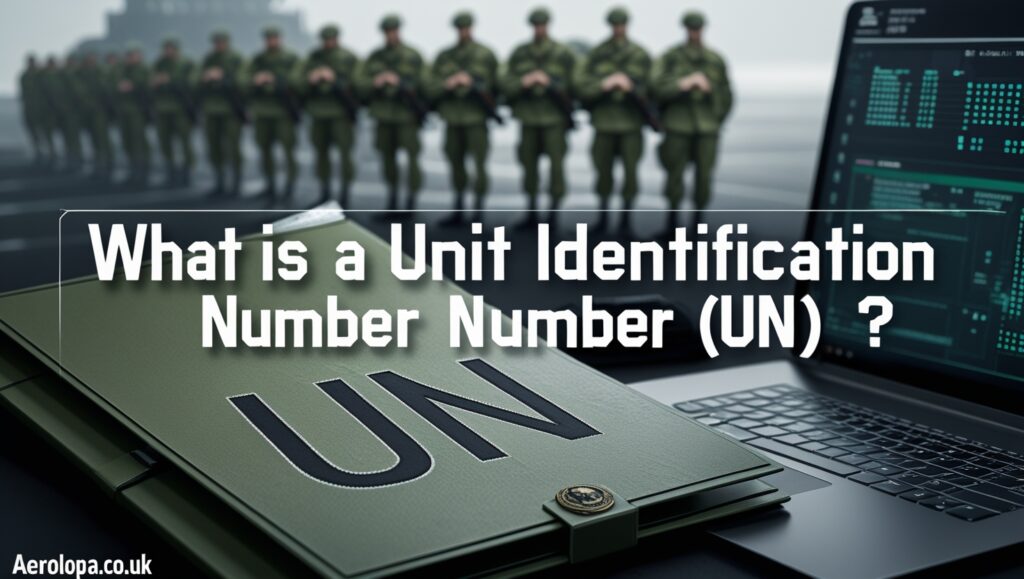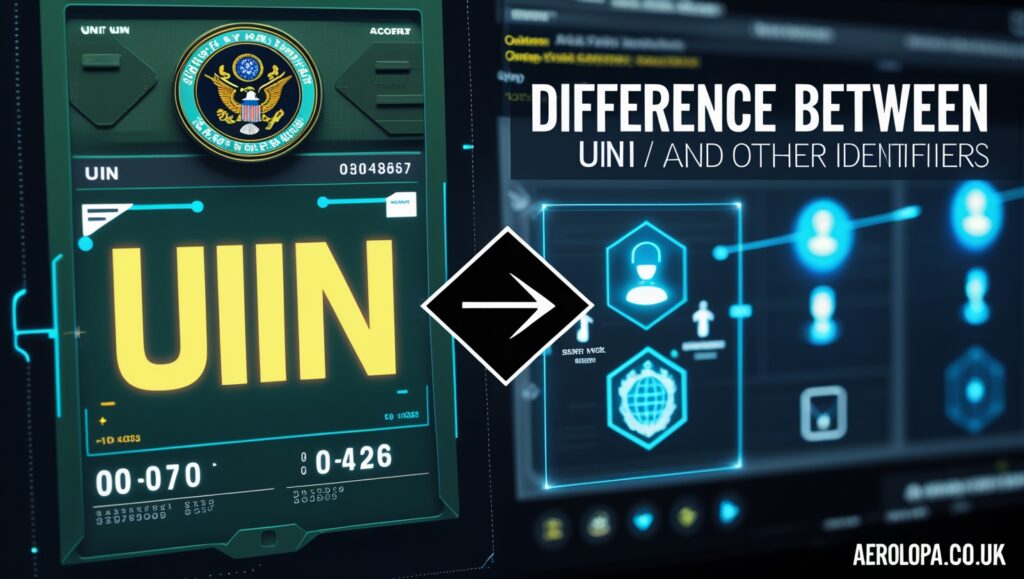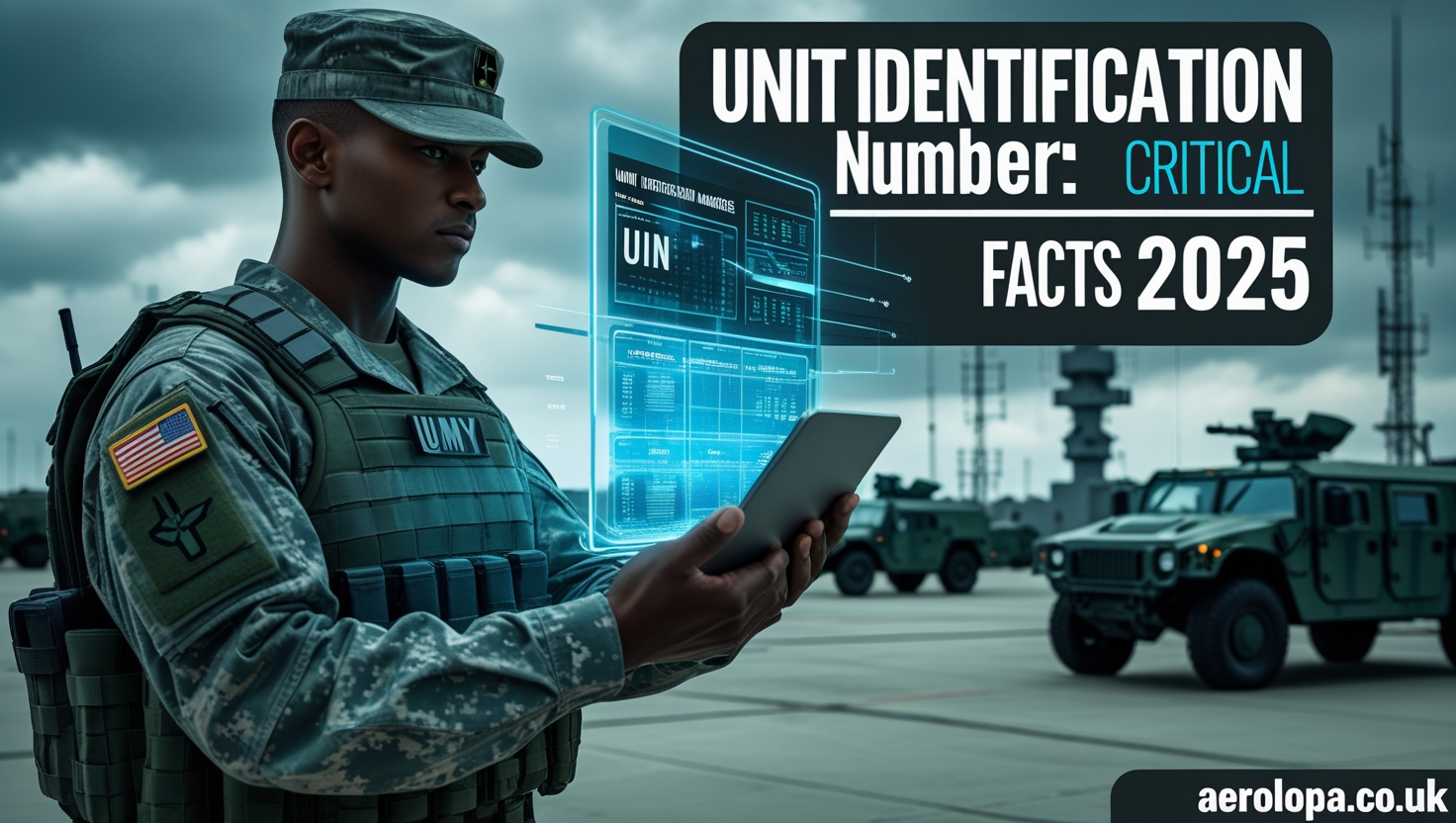We think of a Unit Identification Number (UIN) not as a code—but as the key to organizational clarity, accountability, and compliance for 2025. From military units to government departments, healthcare systems, logistics operations, and corporate environments—a UIN clearly identifies every unit, entity, or organization, without ambiguity.
In this digital-first world, UINs have always been important to support people to reliably perform with accuracy, security, and efficiency. With automation, AI integrations, and globalized systems of data—these kinds of identifiers have become more relevant in ignoring lost time and costs, primarily by providing effective pathways towards automated performance.
This article will provide exploration on what is a Unit Identification Number—why a UIN matters, examples of global applications, and how to verify a UIN—along with responding to some common UIN FAQ’s to best meet user needs.
What is a UIN, or Unit Identification Number?

A unit, institution, or organization can be identified by its Unit Identification Number (UIN), a distinct alphanumeric identifier.
- Format: Usually numerical or alphanumeric characters (6-12 characters).
- Purpose: Prevent duplication, improve security, and assure identification and tracking.
- Used: UINs can be used in military, health, government, logistics, education, and by companies all over the world.
👉 Simply, a UIN is like a digital fingerprint for a unit so that no two organizations (or departments) will ever be confused for each other.
Why Unit Identification Numbers Are Important
The absence of an identification system makes it easy to make expensive mistakes like double billing, wrongful allocation of resources, or non-compliance. UINs can help prevent this.
Key Benefits of UINs
- ✅ Eliminate duplication in records.
- ✅ Enable global tracking across systems.
- ✅ Ensure compliance with government and regulatory bodies.
- ✅ Enhance communication between departments and agencies.
- ✅ Boost security & authentication for sensitive units.
Applications of Unit Identification Numbers
1. Military and Defense
- Used as Unit Identification Codes (UICs).
- Tracks battalions, companies, and divisions.
- Enables deployment planning, payroll, and logistics.
- Critical for NATO and allied forces in joint operations.
👉 Example: The U.S. Army uses UINs to distinguish between active, reserve, and support units.
2. Healthcare Systems
- Hospitals assign UINs to departments, doctors, and practitioners.
- Simplifies insurance claims and billing.
- Prevents errors in medical records.
- Ensures compliance with health ministries and councils.
3. Government and Public Administration
- India: UINs are issued under GST for embassies, consulates, and UN bodies.
- United States: Federal agencies assign UINs for defense and administration.
- European Union: VAT numbers often serve as unit identifiers for tax purposes.
4. Business and Corporate Use
- ERP and CRM systems are used by large companies to assign UINs.
- Helps with internal billing, vendor management, and HR allocation.
- Enables seamless audit trails and compliance reporting.
5. Logistics & Supply Chain
- Shipping containers and warehouses are tracked using UINs.
- Enhances traceability in global trade.
- Minimizes chances of fraud, theft, or loss.
6. Education & Research Institutions
- Universities use to identify departments, labs, faculties.
- Tracks grants, projects, and funding distribution.
- Maintains student and staff records with precision.
Global Variations of UIN
| Region | Type of UIN | Purpose |
|---|---|---|
| United States | Unit Identification Code (UIC) | Military and defense |
| India | GST UIN | Tax exemption for embassies/UN |
| European Union | VAT Identification Numbers | Trade & taxation |
| Healthcare (Global) | UINs for doctors/hospitals | Regulation & billing |
| Corporate ERP | Internal UINs | HR, finance, operations |
How to Find or Verify a Unit Identification Number
The process depends on the sector:
- Military: Found in official defense records.
- India (GST): Available via the official GST portal.
- Healthcare: Verified through medical councils or hospital systems.
- Business: Accessible via ERP/HR records.
👉 Tip: Always use official government or organizational portals to verify authenticity.
Difference Between UIN and Other Identifiers

- In India, UIN is for exempt organizations, whereas PAN is for taxpayers.
- Employee ID vs. UIN: Unit-specific UINs are distinct from employee IDs.
- UIN and Registration No: Registration nos. are entity specific; UINs are universal.
UIN Future (2025 and beyond)
AI-powered, blockchain-secured, and internationally standardized UINs are the way of the future.
- AI and Automation: UIN assignment and validation automation.
- Blockchain: Identity management you can trust is unalterable.
- IoT: Real-time monitoring of units across logistics.
- Global Interoperability: Movement toward aligned standards among nations.
Frequently Asked Questions – FAQs
1. What is a Unit Identification Number (UIN)?
A UIN is a unique code assigned to a unit or organization for identification and compliance.
2. Who issues a UIN?
It depends—governments, defense authorities, healthcare councils, or corporations may issue it.
3. Is UIN the same worldwide?
No, each country has its own system (e.g., GST UIN in India, UIC in U.S. Army, VAT UIN in EU).
4. How can I find my UIN?
Check official portals, defense systems, healthcare councils, or ERP databases.
5. Can a unit have multiple UINs?
Typically no, but multinational companies may hold different UINs across regions.
6. What’s the difference between UIN and GSTIN?
- GSTIN: For businesses.
- UIN: For tax-exempt bodies like UN, embassies, consulates.
7. Why is UIN important in the military?
It enables accurate personnel, logistics, and deployment tracking.
8. Can I search a UIN online?
Yes, there are official portals for areas like EU VAT numbers and GST UINs in India.
9. Is UIN required for individuals?
No, it is mainly for units and organizations, not for people.
10. What is the future of UIN?
UINs will be AI-integrated, blockchain-verified, and globally standardized.
Conclusion
Unit Identification Number (UIN) is a vital aspect in commercial and governmental realities in terms of enhanced accuracy, compliance, and accountability. The origins could go back to military operations, healthcare billings, government taxation, and logistics tracking, UINs provide unique identification, trackability, and assurance for organizations.
In the foreseeable future foreshadowed as 2025, UINs will evolve with AI technologies, blockchain technologies, and IoT technologies as they will propel smarter and globally interoperable identification. Bottom line, knowing UINs now is critical to avoidance of costly mistakes, compliance nightmares, and inefficiencies across all economic sectors.
👉 UIN is not just a number if you are in the defense industry or in the health care industry or if you are a user of logistics or if you are in the business of governance; UIN is the foundation of trust and accountability in a digital/global era.




